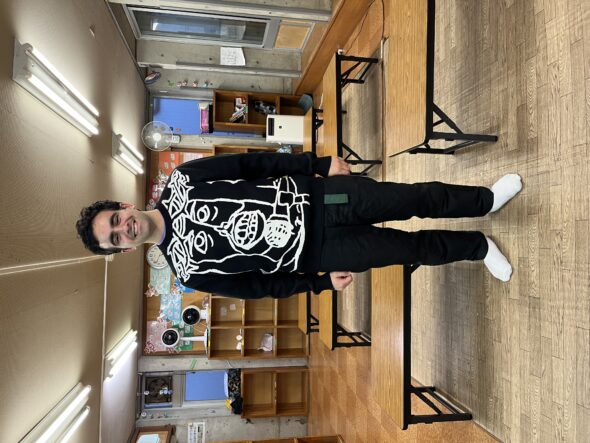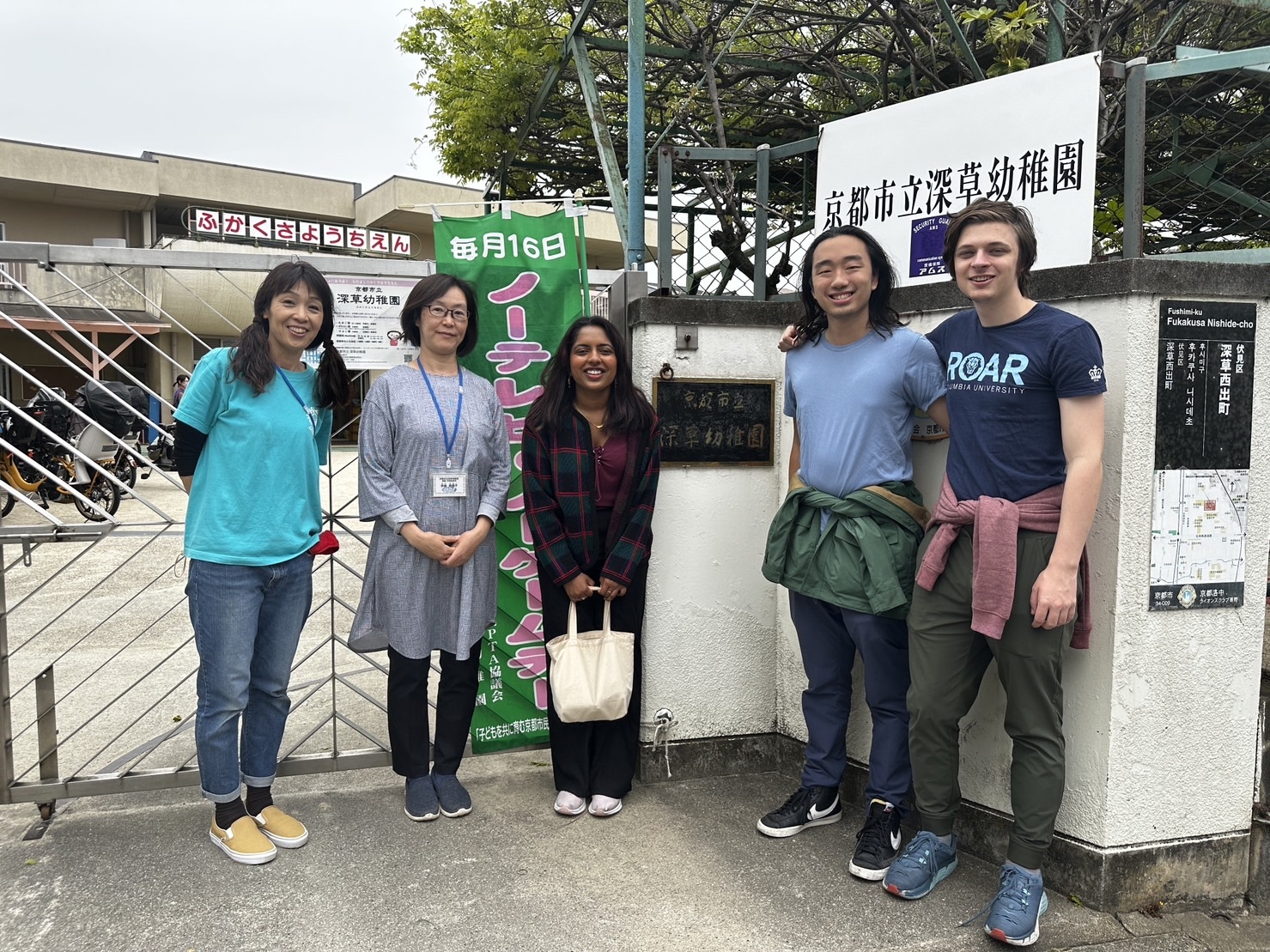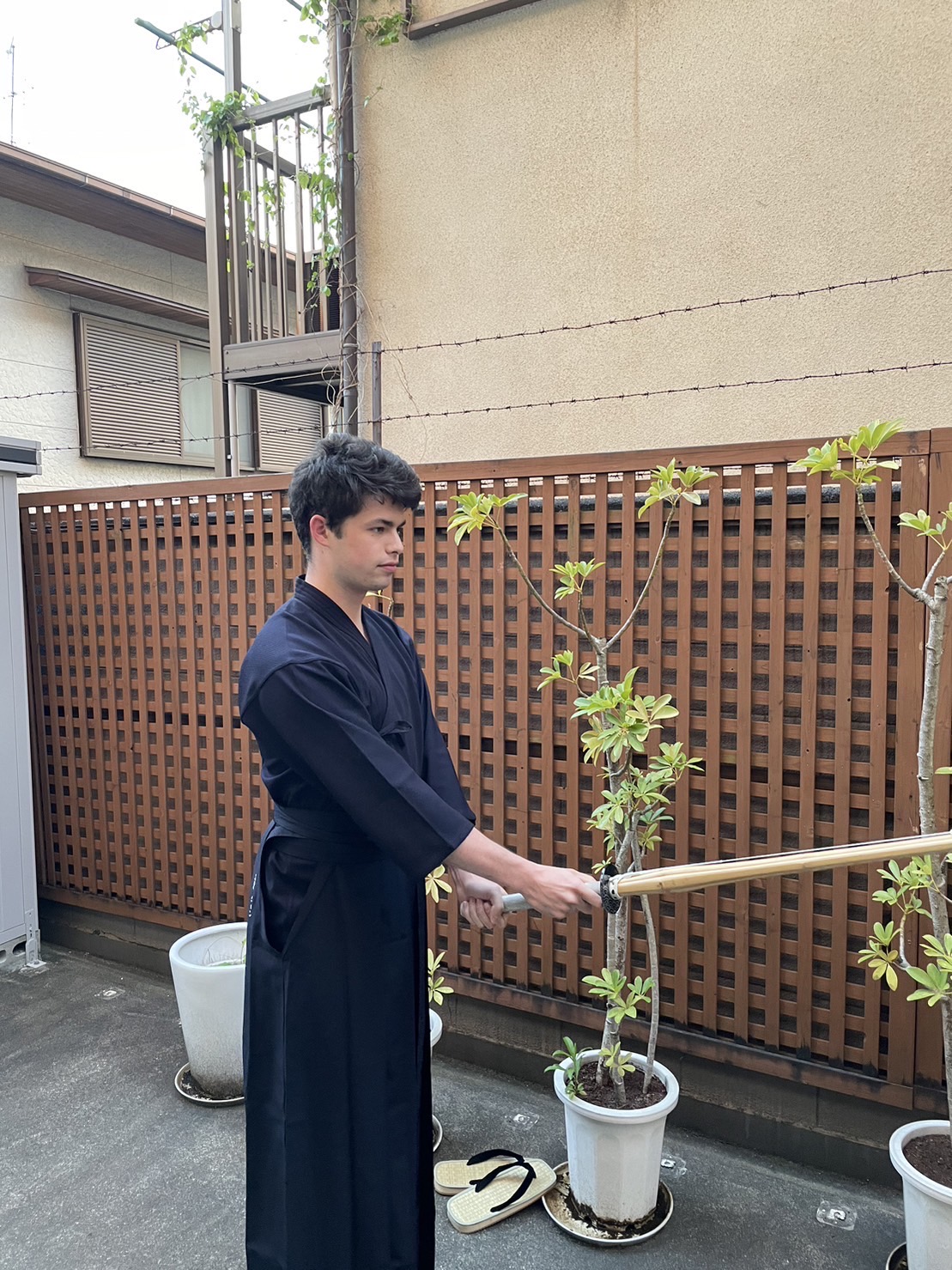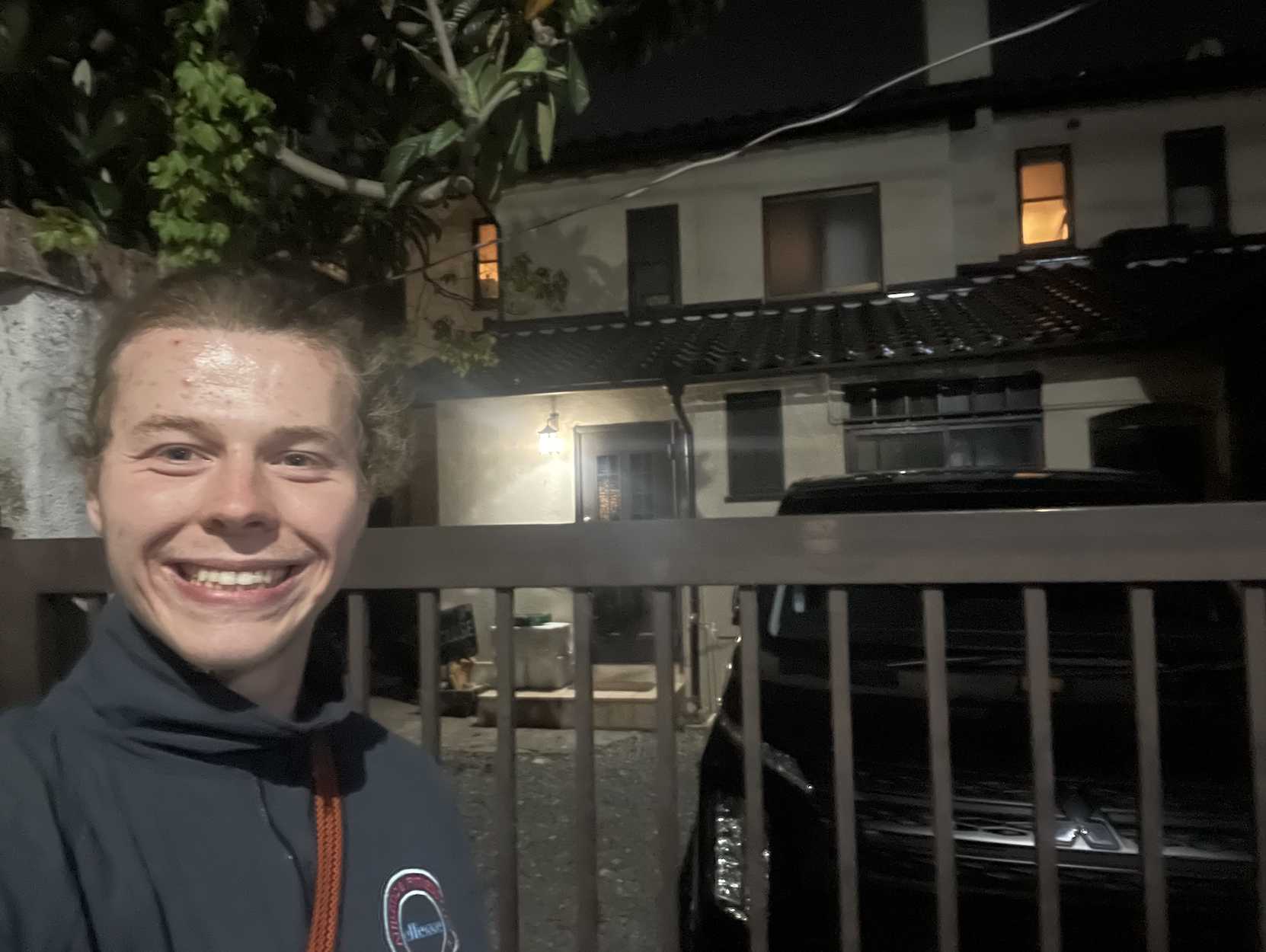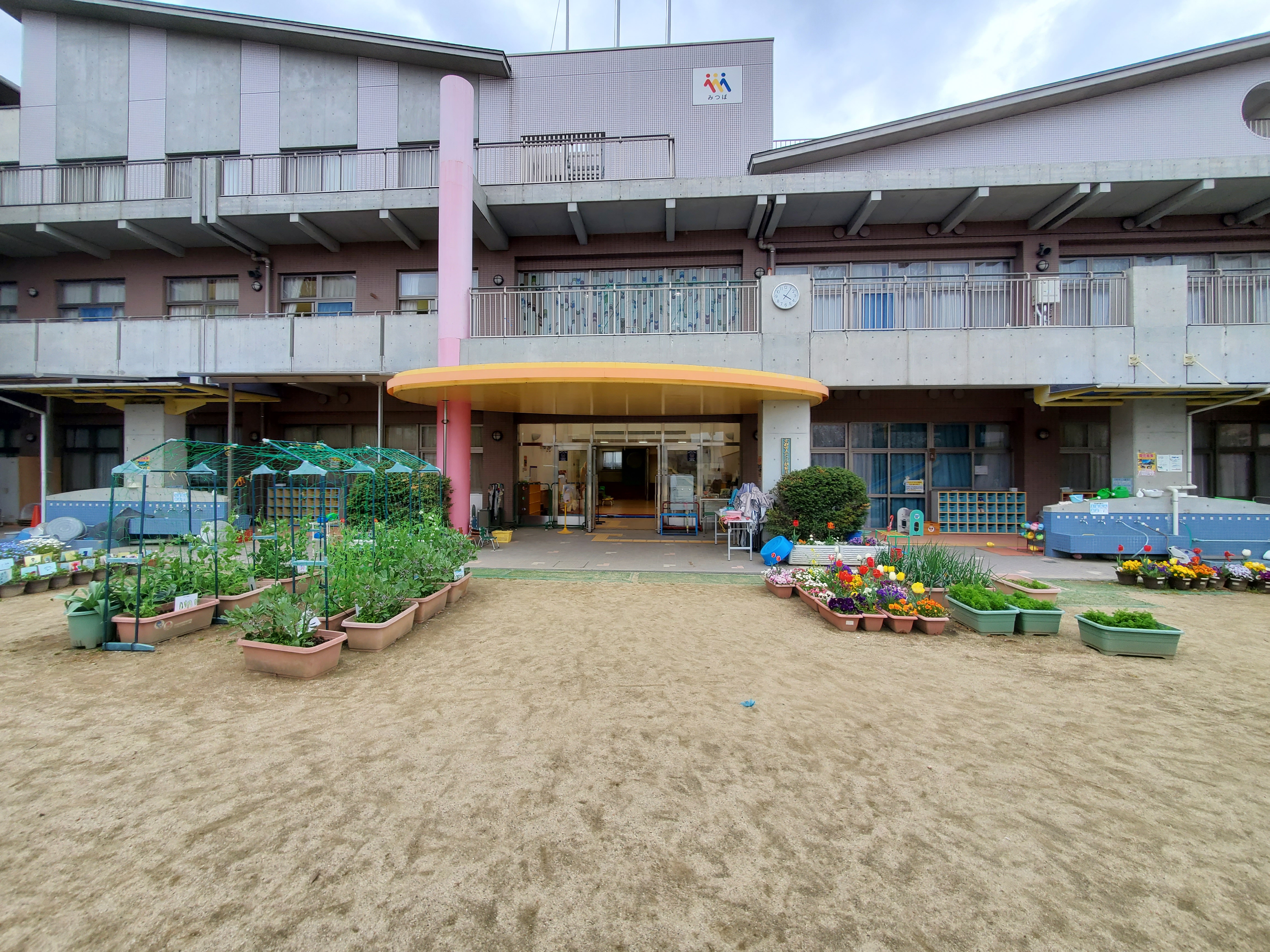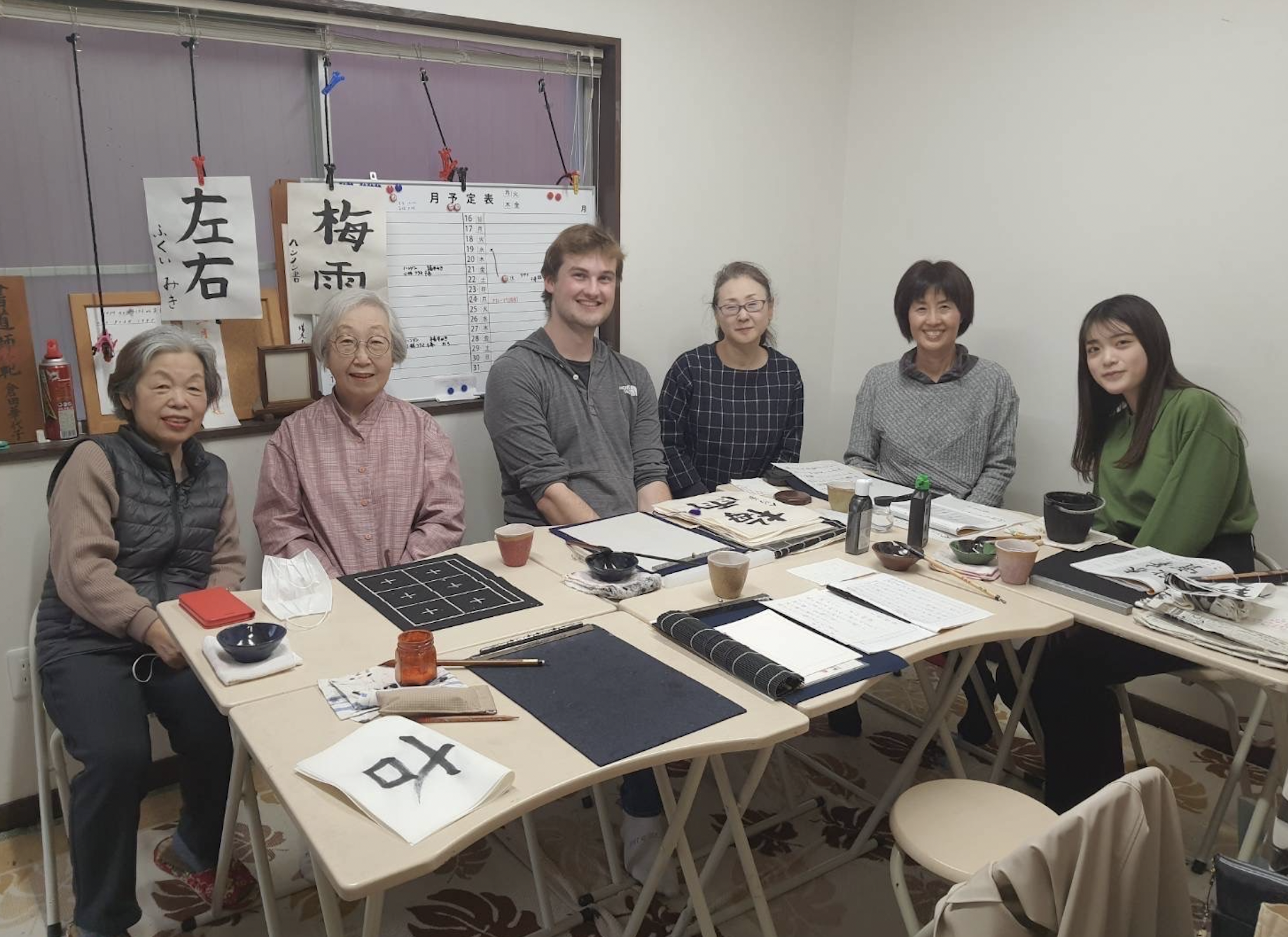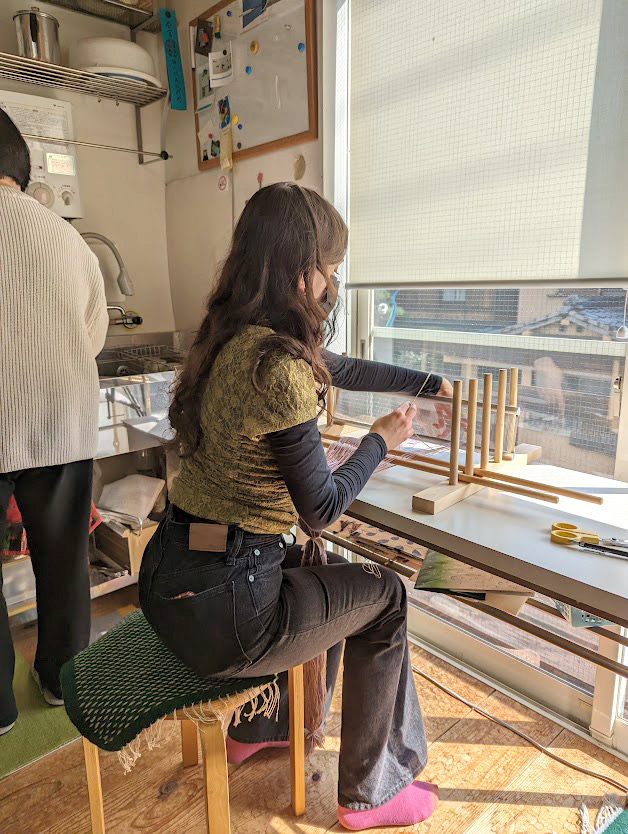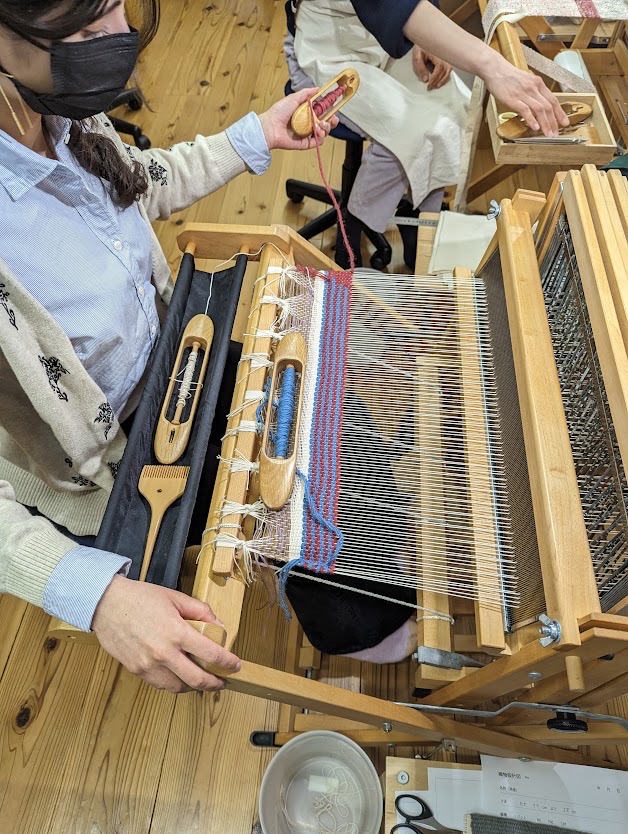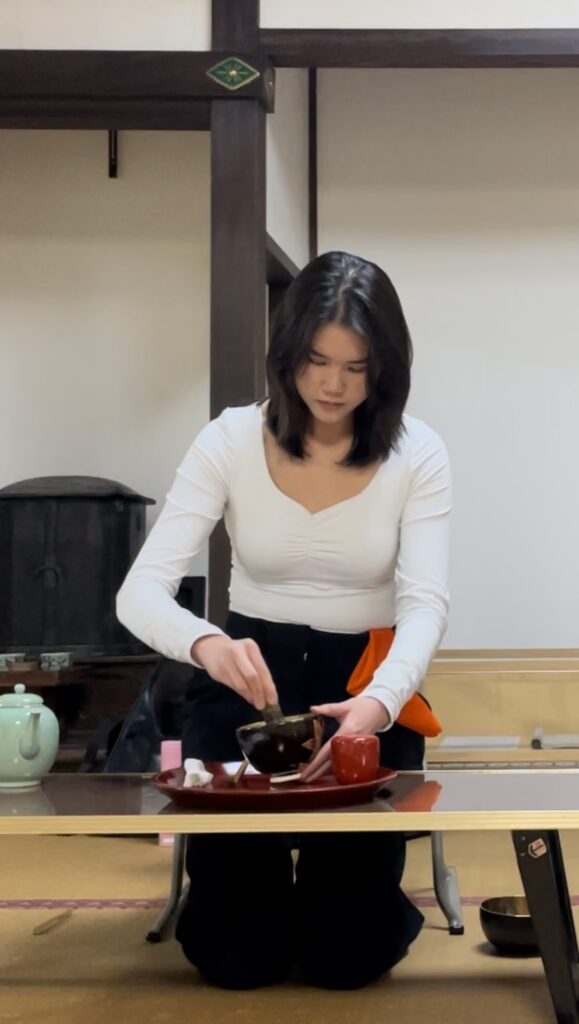
For my CIP this semester, I had the pleasure of learning the tea ceremony (茶道) with Fujimura Sensei from the Wabichakai tea ceremony. Under the guidance of Fujimura Sensei, who has almost 20 years of experience with the tea ceremony, we learned the basic steps of a tea ceremony for two hours each week at a serene temple near Kyoto Station or in the tranquil ambiance of a tea room near Takagamine. Our lessons were conducted fully in Japanese and Fujimura Sensei served us some of the best wagashi (Japanese sweets) every lesson.
One of the most enriching aspects of this journey was Fujimura Sensei’s generosity in sharing not just her knowledge of the tea ceremony, but also her personal insights into Kyoto’s cultural history. Her kindness and patience extended beyond the tea ceremony, preparing and accompanying us to meals where she shared valuable knowledge that enriched our understanding of the city’s essence.
For anyone interested in learning the tea ceremony, my advice would be to embrace mistakes as part of your learning experience. Whether it be understanding the language, messing up the steps, don’t shy away from asking questions as you will always learn something new from it. I would also say to approach the ceremony with an open heart and a willingness to immerse yourself fully in its tranquility—it’s not just about brewing tea; it’s about embracing a way of life, a cultural philosophy that celebrates harmony, respect, and mindfulness.

